In today’s Patreon-fueled shout-out: Help support black-owned business in the Charlottesville area. Check out the Charlottesville Black Business Directory at cvilleblackbiz.com and choose between a variety of goods and services, ranging from beauty supplies, professional services, and e-commerce. Visit cvilleblackbiz.com as soon as you can to get started.
On today’s show:
Charlottesville officials press City Council for $7 million now for 7th Street Parking garage, but Council directs staff to take a pause on planning
Albemarle supervisors get an update on transportation projects
An update from the University of Virginia Health System on the ongoing pandemic.
As of midnight Friday, all COVID-19 restrictions in Virginia are lifted, more than two weeks before Governor Northam had originally announced that community health metrics were low enough to drop all of the rules that have been with us for months to slow the spread of the novel coronavirus. But the director of hospital epidemiology at the University of Virginia Health System said no one should consider the pandemic over.
“COVID has not gone away completely,’” said Dr. Costi Sifri. “It is reduced. It is at some of the best levels we’ve seen in more than a year. But it’s still the case that we have patients being admitted at our hospital with COVID, that there is COVID being transmitted in the community. And we really cannot predict what will happen in a week or a month or three months.”
Today the Virginia Department of Health reports a seven-day average for new cases of 339. As of this morning, 44 percent of Virginians are fully vaccinated.
Dr. Sifri said the restrictions can be lifted in part because of the trends.
“Vaccines are highly, highly effective,” Dr. Sifri said. “If you’re not vaccinated, nothing really changes. You should still be practicing the same precautions that you’ve been practicing.”
Many in the community may not feel comfortable with making the change back to a non-restricted world where masks are not required.
“In those situations I think it is understandable that people still want to wear a mask and we need to make sure that we with grace say that they can wear masks and feel comfortable doing that without judgement,” Dr. Sifri said.
Dr. Sifri stressed that the pandemic is not over.
“Please don’t go out and buy the book that talks about the history of the pandemic because its a story that is still being written,” Dr. Sifri said. “Only about four or five percent of the world’s population is vaccinated at this point so I think there’s a lot that will occur in the future. The virus isn’t done with us yet.”

Memorial Day Weekend is the traditional opening of outdoor pools and swimming areas. That’s that’s certainly the case in Charlottesville, where Washington Park is scheduled to open today as well as the spray grounds at Belmont Park, Greenleaf Park, and Tonsler Park. The Forest Hills spray park will open in June due to mechanical errors. However, today’s rain puts a damper on all of that.
Onesty Pool will remain closed due to staffing issues. However, swimming lakes run by Albemarle County will open later than usual. The season at Chris Greene Lake, Mint Springs, and Walnut Creek will begin on June 17.
At the height of the Great Recession earlier this century, Albemarle County froze many positions and slowed contributions to its capital improvement program. One job that was not filled for many years was transportation planning, but for the past few years, Albemarle has put together an organized list of potential projects to address road capacity issues as well as bike and pedestrian connections.
In July 2019, they adopted a priority list ranging from Hydraulic/29 Improvements at #1 to U.S. 250 West / Gillums Ridge Road Intersection Improvements at #89.
“That list provided all capital transportation projects that are recommended through the various county planning processes,” said Kevin McDermott , a chief of planning in Albemarle, in a May 19 to the Board of Supervisors. (review the update)
The list is intended to help planners identify funding sources for projects, such as the Virginia Department of Transportation’s Smart Scale program as well as the county’s own capital improvement program.
“We have gotten 12 projects from that 2019 project list funded,” McDermott said.
Hydraulic 29 / Improvements, including a pedestrian bridge over U.S. 29 and a roundabout at Hillsdale and Hydraulic, are slated to be funded at $24 million by Commonwealth Transportation Board in June (#1)
U.S. Route 250 improvements to add median between Route 20 and Rolkin Road to receive $6 million in Smart Scale funding using $2 million in local funds (#2)
Route 20 / U.S. 250 intersection will be rebuilt using funding from 2018 Smart Scale round sometime in 2024 (#3)
Berkmar Drive will be extended further north to Lewis and Clark Drive, providing a continuous roadway to UVA North Fork Research Park. Funding came from VDOT’s revenue sharing program.
Further changes to Fontaine Avenue / U.S. 29 intersection including a shared-use path (#6)
A roundabout will be built at Old Lynchburg Road and 5th Street Extended with $5 million in VDOT funds and $2 million in Albemarle funds (#7)
A roundabout at Rio Road and the John Warner Parkway is recommended for $8 million funding in the current Smart Scale process and $2 million in Albemarle funds will be used (#15)
Bike and pedestrian improvements will be made on Old Lynchburg Road using Albemarle funds (#26)
A section of the Northtown Trail shared-use path will be built between Seminole Lane North and Carrsbrook Drive at a cost of $4 million (#35)
A greenway trail on Moores Creek and a trail hub at 5th Street Station will receive Smart Scale funds and has a total cost of $10 million (#40)
A park and ride lot will be constructed near Exit 107 and Crozet Park to serve Jaunt and the future Afton Express at a cost of $3 million (#82)
McDermott’s purpose for appearing before the supervisors was to get their preliminary support for the next round of transportation projects. At the top of a short list for this year’s cycle of VDOT revenue-sharing funds is the completion Eastern Avenue, a north-south roadway designed to increase connectivity and traffic circulation throughout Crozet.
“That project is currently being evaluated through an alignment study and conceptual design which the county has funded through our transportation leveraging project,” McDermott said. “We have just recently received the updated cost estimates from that consultant we have hired and their preliminary cost estimates are now at $19,983,000.”
That would require at least a $10 million match from county funds. However, if approved the state funding would not be available until 2027.
Another project on the list for potential revenue-sharing projects is one to build bike and pedestrian improvements on Mill Creek Drive to Peregory Lane, a top priority in a recent corridor study. That has a cost estimate of $2 million.
Applications for revenue-sharing projects are due this year. Next year Smart Scale projects will be due. Potential applications to be made next year include a roundabout at District Avenue and Hydraulic Road, a realignment of Hillsdale Drive, and a roundabout at the intersection of Belvedere Boulevard and Rio Road.
There’s plenty of time to get involved with these applications. Keep reading and stay tuned.
You’re reading to Charlottesville Community Engagement. In this subscriber supported public service announcement, over the course of the pandemic, the Albemarle Charlottesville Historical Society has provided hours and hours of interviews, presentations, and discussions about interpretations and recollections of the past. All of this is available for you to watch, for free, on the Historical Society’s YouTube Channel. There’s even an appearance by me, talking about my work on cvillepedia!
On Tuesday, May 25, City Council held a work session on two items related to transportation, though there was little in the materials presented to suggest the two are linked. The second item was on route changes for Charlottesville Area Transit, and we’ll come back to that in the next installment of Charlottesville Community Engagement.
Would Council give staff permission to continue planning work on a proposed 300-space parking garage at the corner of East Market and 9th Street for which 90 spaces would be reserved for Albemarle County for their courts system. That’s codified in a December 2018 agreement between the two jurisdictions. (download the agreement) (staff report)
Here’s City Manager Chip Boyles.
“A previous Council had approved for the city to pursue building a parking structure as part of the MOA on the site of 7th Street and Market,” Boyles said. “We’ve been working on that and we’re here to discuss with you both that option as well as other options that perhaps meet more current needs and demands of the city and Council’s vision.”
Staff has been working off of a resolution adopted by Council in December 2019 to proceed with the plan, including the allocation of $1.28 million from a capital contingency account to cover the county’s share of the surface lot the two jurisdictions purchased in 2005 to support an eventual court expansion. (minutes from December 6, 2019 City Council meeting)

Alternatives in the MOA include selling that lot back to Albemarle, or providing 100 spaces in the Market Street Parking Garage. The deadline to provide any of these is November 30, 2023.
The city currently has a shortlist of three firms who would both design and build the structure.
“Those three are slightly on pause right now while we get through this meeting,” said Scott Hendrix, senior project manager for Charlottesville.
Each of the firms has submitted a request for qualifications at their own expense, and Hendrix said clarity from Council was needed. During development of the fiscal year 2022 budget, Council reduced the amount requested by staff from $8 million to $1 million, delaying the balance to FY2023. That would delay the project meaning it would not be complete in time for the November 2023 deadline.
Chris Engel, the city’s Economic Development Director, presented Council with a couple of alternatives to Council, both of which involve selling a share back to the surface lot back to Albemarle and only using the land paid $2.85 million for in January 2017. There are two commercial buildings on that lot whose tenants pay rent to Charlottesville.
Option 1B would be to build a smaller structure on the land with between 150 and 200 spaces, and Option 1C would be to just use the land for surface parking.
Engel said one of the city’s goals has been to continue to provide enough parking for visitors traveling downtown for either business or entertainment. For instance, he said 50 spaces under the Belmont Bridge will be lost after it is replaced.
Engel said Council will have to consider the future of the Market Street Parking garage, which he said is 46 years old.
“It’s about to have a structural reassessment as it does every five or seven years,” Engel said. “It’s probably in the city’s best interest to start thinking about what a plan for replacement looks like. Obviously having another facility nearby would help alleviate that when and if the day comes.”
The city owns the Market Street structure outright, whereas the Charlottesville Parking Center owns the Water Street Parking Garage. The city manages that structure, but leases the space to CPC. The two were involved in a series of lawsuits within the last decade. Albemarle County currently participates in the validation system for the two garages.
The most recently available official study of parking in Charlottesville is from 2015 when the firm Nelson Nygaard was hired to conduct a study of downtown parking. One recommendation was to create something called a Transportation Demand Management Plan. More specifically the idea was to create a “Transportation Management Association.” (read the study)
“A TMA can help to disseminate information about alternative commuting options, run events and campaigns to encourage workers to try alternate commutes, and develop tailored programs for both employers and employees that meet their needs,” reads page 68 of the study.
Councilor Michael Payne asked if a TDM program had been examined while plans for the proposed garage were penciled up.
“As a way to handle supposed parking demand issue throughout downtown throughout that strategy as opposed to purely meeting it through building new parking spaces or maximizing the amount of new parking spaces being built,” Payne said.
The Nelson Nygaard also suggested creating a parking department in city government. Rick Siebert was hired in 2017 to implement the Parking Action Plan and as well as a six-month pilot for on-street parking meters. He said TDM is not a magic solution.
“It is generally a very long-term solution and it requires a lot of comprehensive cooperation,” Siebert said. “If a lot of the people who work and visit downtown come from in the county or neighboring counties, then we need to work with those counties in working out mass transit options that are more attractive than driving your car or we have to work out park and ride lots that somehow are more attractive than driving to the Water Street or Market Street garages.”
A possible venue for that discussion would be the Regional Transit Partnership or the Charlottesville-Albemarle Metropolitan Planning Organization. As we’ll hear more tomorrow, Charlottesville Area Transit is looking to build park and ride lots.
Several members of the Parking Advisory Panel spoke. That group is divided. Joan Fenton wants more parking spaces downtown.
“If you look at the number of parking spots that have been lost downtown and will continue to be lost downtown, this is a neutral amount of parking spaces that are going to be added,” Fenton said.
However, Jamelle Bouie took an opposing view.
“When thinking about the necessity for additional parking, we really should be focused on whether or not there has been any demonstrated need for it,” Bouie said. “In the data the city collects and the 2015 parking study, both strongly suggest that with better parking management, there’s all the parking we need downtown. There’s no need for an additional structure.”
During their discussion, Mayor Nikuyah Walker said she did not think the full garage was necessary to meet the terms of the agreement. She suggested collecting new data post COVID to demonstrate how many people will no longer travel downtown to work.
“What is staff considering in terms of work from home and is there a possibility that to decrease the demand on parking, that that becomes part of our plan,” Walker said.
Walker pointed out that the Thomas Jefferson Planning District Commission already has a RideShare program in place for commuters. She also added that programs are in motion to reduce the number of people who go through the criminal justice system.
“If the city and county makes a commitment to keep their citizens out of the courtroom when it is possible, then that should also limit the impact on parking,” Walker said. “But I still think to cancel the project and not honor our parking needs with the county should not be an option.”
City Councilor Michael Payne said he felt the city could honor the agreement without building the garage, especially at a time when there are additional pressures on the Capital Improvement Program. He also wanted more data collected.
“You know we hear a lot about perceptions but I haven’t seen a lot of data to back up that there is a severe parking shortage,” Payne said.
Payne’s option would be to go with Option C combined with some form of transportation demand management.
Councilor Lloyd Snook spends a lot of time downtown as an attorney. Before COVID, he supported a new garage downtown to address long-term parking inventory. This spring, though, he supported delaying the $7 million in the budget to get new information on parking capacity with buildings like CODE, Apex Clean Energy, and the 3-Twenty-3 Building on 4th Street SE.
“You could reasonably expect to have something like a thousand more people coming to work in those buildings and apparently only about 500 parking spaces were being provided,” Snook said. “We can see that pre-COVID we were heading for a real problem with those places coming online. I decided a couple of months however that the changes from COVID were likely number one were significant right now, number two were likely to continue for at least a year or two or perhaps longer.”
Snook said the pause also comes at a time when the capital budget is under a crunch. He also said the 300-space garage may not be in the city’s long-term interests. He said he thought the city should take time to develop the garage with other uses on the same site.
“That particular spot, that particular lot, and that particular design don’t do very much for the way that I think that we want to be developing the city,” Snook said. “I’ve said before if we built that structure, we would probably look back ten years later and say ‘what we were thinking when we built only that parking garage?”
Councilor Heather Hill said she understood the concerns of her colleagues, but thought a garage would be needed sooner rather than later.
“The loss of the parking spaces is going to be real, especially for city employees and we have to figure out within the organization how we are going to accommodate our own employees and I think that’s going to have to be some creative thinking around how do we get our own employees into the downtown area without providing them with parking immediately adjacent to City Hall,” Hill said.
Perhaps a transportation demand management plan would be in order?

At the end of this event, Boyles said he heard direction to negotiate with Albemarle County on what new options they might be interested in to meet the needs of the agreement.
“The second thing if I’m hearing correctly is that we should cease the movement toward the 200 to 300 spot garage and pursue the option 1C with the surface parking so that is going along the same time frame as we’re discussing and presenting options to Albemarle County,” Boyles said.
Boyles said he will need a resolution to confirm that direction. That will happen at the June 7 meeting.
The surface lot would require demolition of the Lucky 7 and the Guadalajara. The city purchased the lot for $2.85 million in January 2017. With 38 spaces proposed, that’s $75,000 a space, before the costs of demolition are factored in.
In the next installment of Charlottesville Community Engagement, we’ll hear about upcoming changes in coming up for Charlottesville Area Transit.
Thank you for reading. Please consider a contribution through Patreon to support general research or pay for a subscription through Substack.

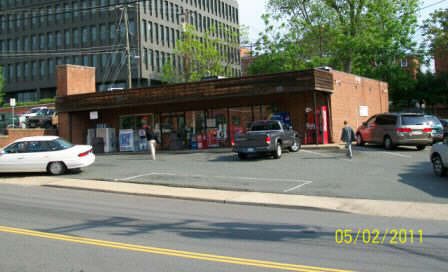



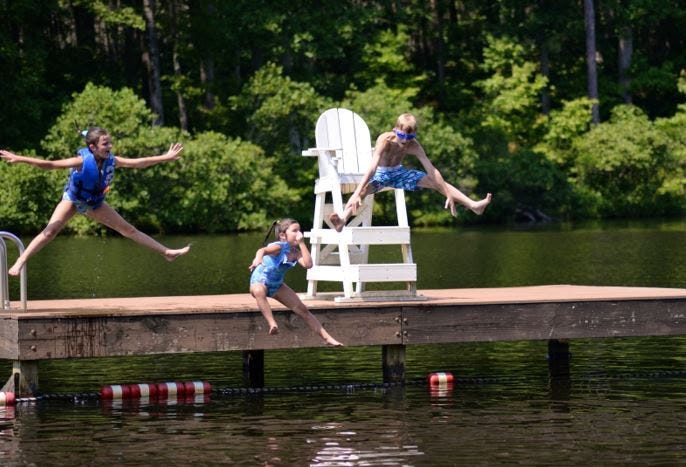
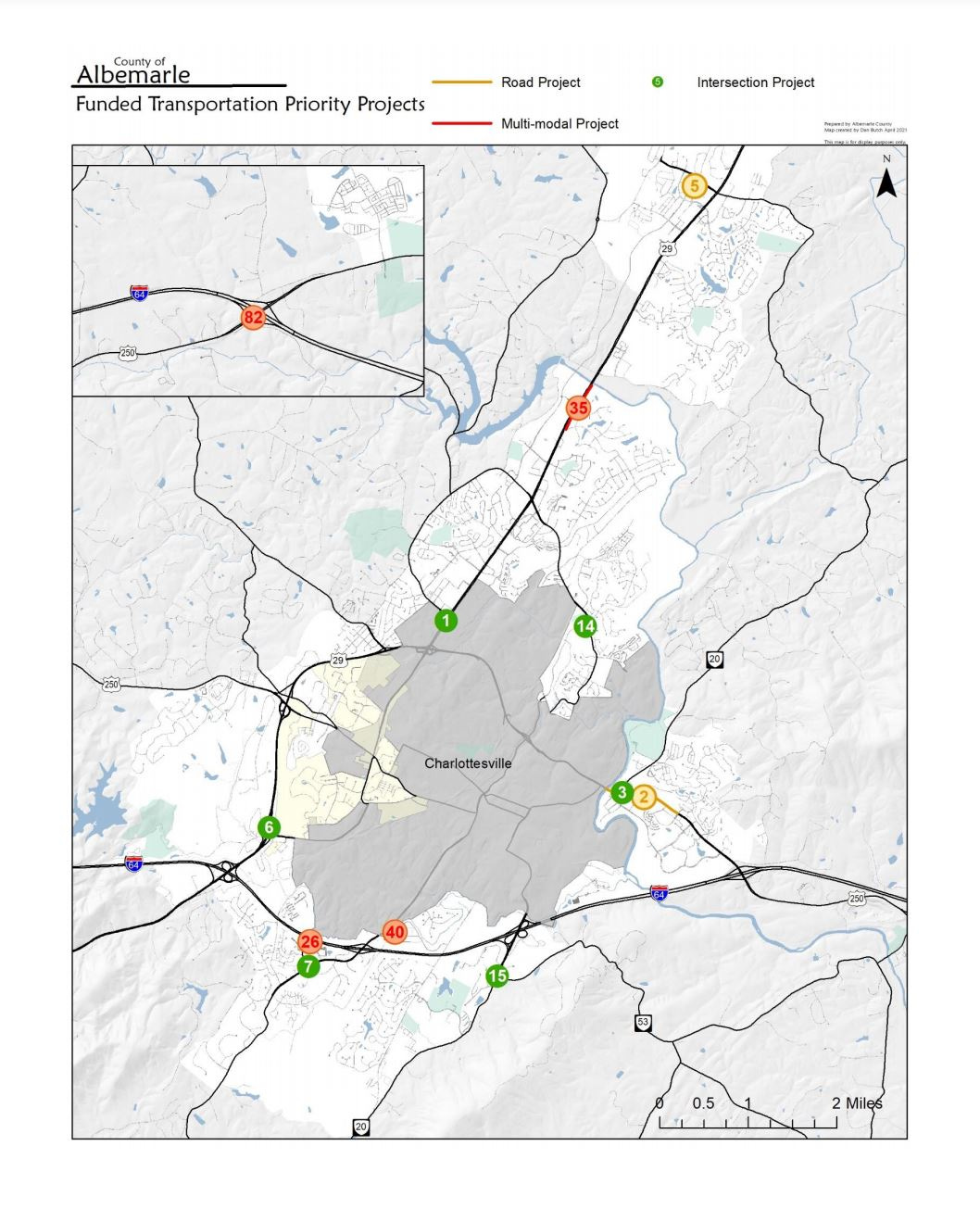


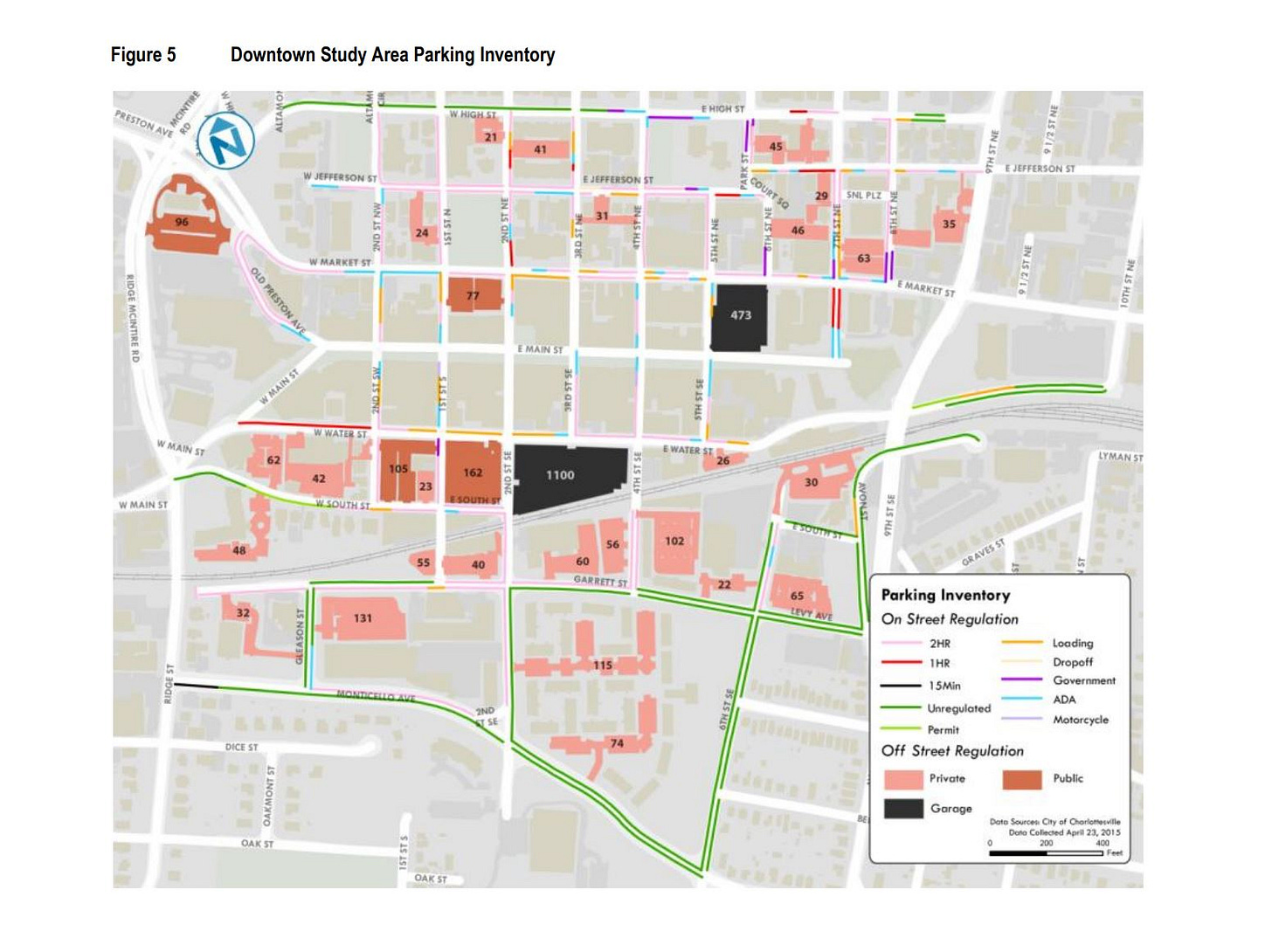








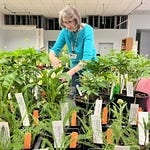
Share this post